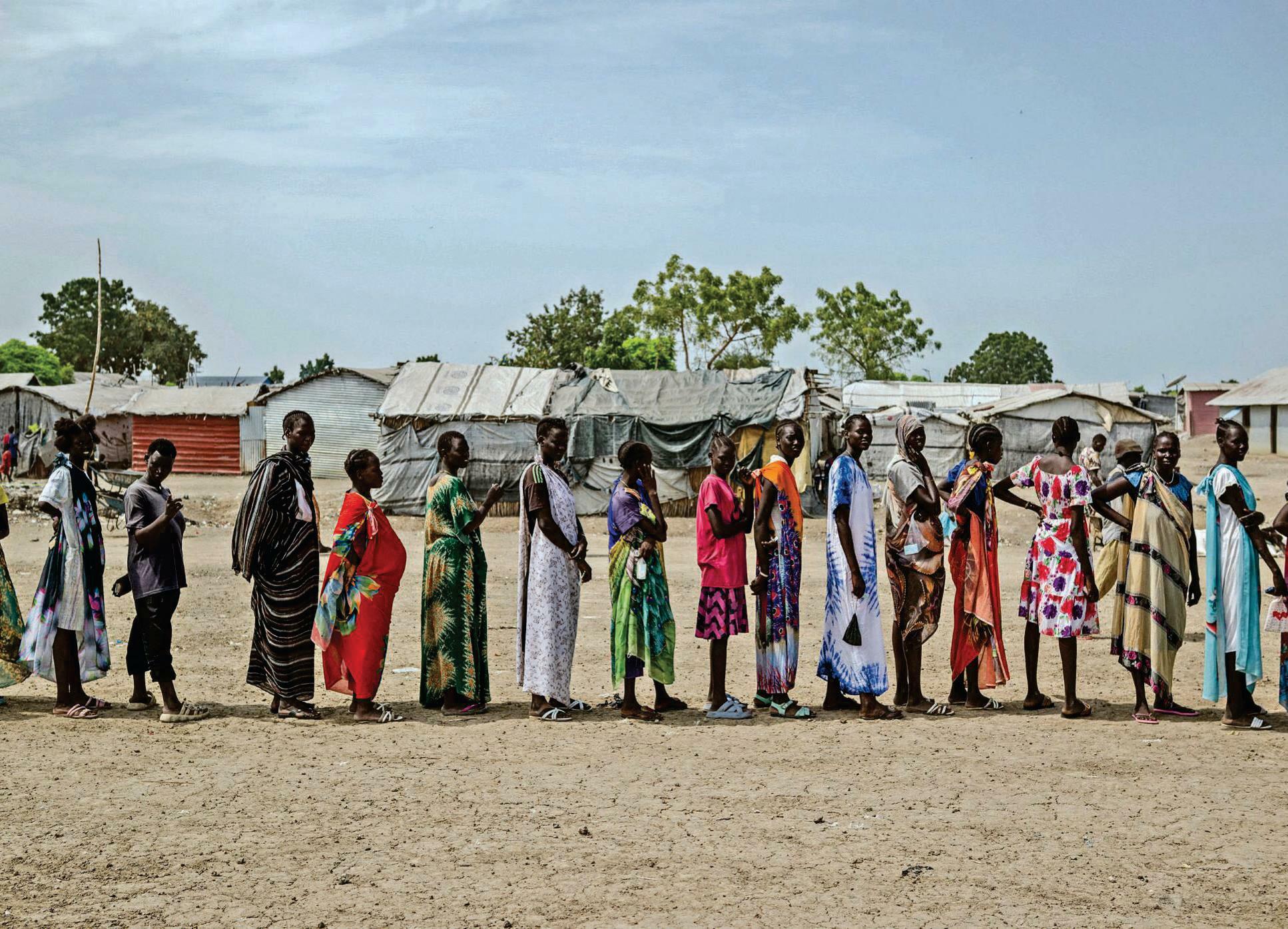Versuchen GOLD - Frei
The real reason we fail to feed those in need
Time
|December 08, 2025
FOOD IS THE DIFFERENCE BETWEEN LIFE AND DEATH. Everyone knows this. But it’s also the difference between stability and instability, union and division, and peace and war. I have had a front-row seat to some of the worst recent humanitarian crises—from Yemen and Syria to Afghanistan and Gaza—and this has been true, time and time again.

I’ve sat face-to-face with mothers who’ve told me, “My son didn’t want to join ISIS or al-Qaeda, but he had to feed his little girl.” These are families who don’t want to leave home, but will do what any mother or father would to feed their children, even if it means risking everything.
The power of food is simple to understand, yet the systems around it are anything but. When famine strikes, we rightfully react. Emergency aid is activated. Millions of dollars are deployed. But repeatedly, the cycle starts afresh. We fail because we treat famine in isolation from its interconnected crises.
We have enough funds, and enough food, to feed the world. The real reason humanitarian efforts keep failing is because decisionmakers profit from short-term solutions at the cost of addressing the root causes of inequality and food insecurity.
WHEN THE WORLD FOOD PROGRAMME (WFP) received the Nobel Peace Prize in 2020, it was honored in a year marked by severe global conflicts and crises, including the pandemic. In announcing its decision, the Nobel Committee hailed the scale of aid that had been provided the previous year, with our team having helped close to 100 million people across 88 countries. But it explicitly cited the wider impact of our approach in shifting perceptions of famine and hunger—moving from treating crises as disasters in need of immediate relief, to understanding access to food as a powerful tool in both conflict prevention and resolution.
Whether in the form of vegetables, rice, or bread, our team was providing the weapons of peace required to start reconciliation within communities that creates stability across nations. The reason food is effective at establishing peace is the same reason leaders use food as a weapon of control to weaken majorities or deplete autonomy: because food is powerful.
Diese Geschichte stammt aus der December 08, 2025-Ausgabe von Time.
Abonnieren Sie Magzter GOLD, um auf Tausende kuratierter Premium-Geschichten und über 9.000 Zeitschriften und Zeitungen zuzugreifen.
Sie sind bereits Abonnent? Anmelden
WEITERE GESCHICHTEN VON Time

Time
The journalist and the jinx in a suburban standoff
CLAIRE DANES GETS A LOT OF ATTENTION for her “cry face.” It is, indeed, a sight to behold. Engulfed by waves of sorrow, her chin vibrates, her eyes scrunch, the corners of her mouth turn down as though tugged by invisible weights.
4 mins
December 08, 2025

Time
LIVING IN PUBLIC
“The camera eats first.” A decade ago, that phrase was a joke about influencers and their avocado toast. Now it's shorthand for how every corner of life—dinners, cleaning, milestones, even grief—can be packaged for public consumption. We live in a world where intimacy has become inventory, where the difference between living and posting is often just a matter of lighting.
3 mins
December 08, 2025

Time
5 migraine symptoms that aren't headaches
NEARLY 40 MILLION people in the U.S. suffer from migraines, making the painful disorder one of the most common that neurologists treat. It's also among the most confusing. Because of the many ways it can show up, it can take more than a decade to receive an accurate diagnosis.
2 mins
December 08, 2025

Time
Distress Signal
WHAT THE L.A. FIRES REVEAL ABOUT AMERICA'S BLEAK CLIMATE FUTURE
13 mins
December 08, 2025
Time
The food pyramid may be back on the menu
EARLY PUBLIC NUTRITION ADVICE CAME AS A WARNING. Wilbur O. Atwater, a chemist and renowned nutritionist, wrote in an 1902 edition of the U.S. Department of Agriculture's (USDA) digest, Farmers' Bulletin, that \"Unless care is exercised in selecting food, a diet may result which is one-sided or badly balanced—that is, one in which either protein or fuel ingredients (carbohydrate and fat) are provided in excess ... The evils of overeating may not be felt at once, but sooner or later they are sure to appear.\"
2 mins
December 08, 2025

Time
Where top U.S. leaders earn their stripes
AS THE INDUSTRIES AND COMPANIES driving the American economy change, new generations of leaders are rotated in to take the helm.
3 mins
December 08, 2025

Time
The Risk Report
THREE YEARS AND NINE MONTHS after Russia's full-scale invasion of Ukraine, the war grinds on. There's been plenty of news and noise of late. Yet as we approach the end of 2025, there's no sign of resolution on the horizon.
2 mins
December 08, 2025

Time
JON CHU'S AMERICAN DREAM
The Wicked: For Good director on trying to change the world, one blockbuster at a time
6 mins
December 08, 2025

Time
Ken Burns'
The filmmaker on his 12-hour documentary The American Revolution, the importance of undertow, and what's next
2 mins
December 08, 2025

Time
A seductive Dangerous Liaisons remix, with feminist intentions
There are no heroes in Les Liaisons Dangereuses, Pierre Choderlos de Laclos' 1782 novel of end-stage French aristocratic decadence. Its chief villain is Marquise Isabelle de Merteuil, a master manipulator who exploits her former lover the Vicomte de Valmont's resurgent desire for her with a wager that dooms them both. As a teenage Fiona Apple dryly noted: “It's a sad, sad world when a girl will break a boy just because she can.”
1 mins
December 08, 2025
Listen
Translate
Change font size

